SENA TECHNOLOGIES ZBLINXZS10 ZIGBEE SERIAL ADAPTER User Manual
Sena Technologies,Inc. ZIGBEE SERIAL ADAPTER Users Manual
Users Manual
ZBlinx-Z series
User Guide
Version 0.0.1
2010-02-01

User Guide for the ZBlinx-Z series
Version 0.0.1
Firmware version 1.0.X
Last revised on January 12, 2010
Printed in Korea
Copyright
Copyright 2002, SENA technologies, Inc. All rights reserved.
SENA Technologies reserves the right to make changes and improvements to its product without
providing notice.
Trademark
ZBlinx™ is a trademark of SENA Technologies, Inc.
Windows® is a registered trademark of Microsoft Corporation.
Ethernet® is a registered trademark of XEROX Corporation.
Notice to Users
When a system failure may cause serious consequences, protecting life and property against such
consequences with a backup system or safety device is essential. The user agrees that protection
against consequences resulting from system failure is the user's responsibility.
This device is not approved for life-support or medical systems.
Changes or modifications to this device not explicitly approved by SENA Technologies will void the
user's authority to operate this device.
Precautions and Safety
Electricity
Use only the supplied AC adapter. Use of unauthorized power adapter is not recommended. Electrical
shock may result.
Do not kink or crease the power cable or place heavy objects on the power cable. Fire can result from
damaged power cables.
Do not handle power plug and adapter with wet hands. Electrical shock may result.
Immediately power off the product and unplug the AC adapter if smoke or odors emit from the product
and adapter. Fire can result from improper use.
Immediately power off the product and unplug the AC adapter if water or other liquids are present. Fire
can result from improper use.
Product
ZBlinx-Z meets the RS-232 standards. Do not wire with non-standard products. Damage to your
products may result from improper use.
Do not drop or subject the device to impact. Damage to your products may result from improper use.
Keep away from harsh environments including humid, dusty, and smoky areas. Damage to your
products may result from improper use.
Do not use excessive force on the buttons or attempt to disassemble the device. Damage to your
products may result from improper use.
Do not place heavy objects on the product. Damage to your products may result from improper use.
Technical Support
SENA Technologies, Inc.
210 Yangjae-dong, Seocho-gu
Seoul 137-130, Korea
Tel: (+82-2) 573-5422
Fax: (+82-2) 573-7710
E-Mail: support@sena.com
Website: http://www.sena.com

Revision History
Revision Date Name Description
V0.0.1 2010-01-12 Initial Revision History
- 4 -
Contents
1. Introduction ...................................................................................................................................... 6
1.1. Overview........................................................................................................................... 6
1.2. Product Specification........................................................................................................ 7
2. Approval Information........................................................................................................................ 8
2.1. FCC .................................................................................................................................. 8
2.1.1. FCC Compliance Statement ..................................................................................... 8
2.1.2. RF Exposure Statement............................................................................................ 8
2.1.3. Do not ....................................................................................................................... 8
2.2. CE..................................................................................................................................... 8
2.2.1. EC-R&TTE Directive................................................................................................. 8
2.3. TELEC.............................................................................................................................. 8
2.4. KCC.................................................................................................................................. 8
3. RF Information ................................................................................................................................. 9
3.1. Radio Frequency Range .................................................................................................. 9
3.2. Number of Frequency Channel ........................................................................................ 9
3.3. Transmission Method ....................................................................................................... 9
3.4. Modulation Method........................................................................................................... 9
3.5. Radio Output Power.........................................................................................................9
3.6. Receiving Sensitivity ........................................................................................................ 9
4. AT Command................................................................................................................................. 10
4.1. Overview......................................................................................................................... 10
4.2. Command Line Format................................................................................................... 10
4.3. Standard AT Commands..................................................................................................11
4.3.1. AT.............................................................................................................................11
4.3.2. ATA...........................................................................................................................11
4.3.3. ATD<node ID or IEEE address>..............................................................................11
4.3.4. ATE<0 or 1>.............................................................................................................11
4.3.5. ATH..........................................................................................................................11
4.3.6. ATO..........................................................................................................................11
4.3.7. ATS ..........................................................................................................................11
4.3.8. ATZ ......................................................................................................................... 12
4.3.9. AT&F....................................................................................................................... 12
4.3.10. +++.......................................................................................................................... 12
4.4 Extended AT Commands................................................................................................ 12
4.4.1. AT+EUI ................................................................................................................... 12
4.4.2. AT+DESTEUI.......................................................................................................... 12
4.4.3. AT+NODEID? ......................................................................................................... 12
4.4.4. AT+CH .................................................................................................................... 13
4.4.5. AT+PANID............................................................................................................... 13
4.4.6. AT+EPID ................................................................................................................. 13
4.4.7. AT+POWER............................................................................................................ 13
4.4.8. AT+GROUPID......................................................................................................... 13
4.4.9. AT+DESTGROUPID............................................................................................... 14
4.4.10. AT+INFO................................................................................................................. 14
4.4.11. AT+SCAN ............................................................................................................... 14
4.4.12. AT+ASCAN............................................................................................................. 14
4.4.13. AT+ESCAN............................................................................................................. 14
4.4.14. AT+FORM............................................................................................................... 14
4.4.15. AT+PERMIT............................................................................................................ 15
4.4.16. AT+JOIN ................................................................................................................. 15
4.4.17. AT+LEAVE .............................................................................................................. 15
4.4.18. AT+SLEEP.............................................................................................................. 15
4.4.19. AT+NODETYPE...................................................................................................... 15
4.4.20. AT+LISTEN............................................................................................................. 15
4.4.21. AT+OPMODE ......................................................................................................... 15
4.4.22. AT+DATAMODE...................................................................................................... 15
- 5 -
4.4.23. AT+UNICAST.......................................................................................................... 15
4.4.24. AT+MULTICAST ..................................................................................................... 15
4.4.25. AT+BROADCAST................................................................................................... 15
4.4.26. AT+REMOTECONFIG............................................................................................ 15
4.4.27. AT+TIMEOUT ......................................................................................................... 16
4.4.28. AT+PERIOD............................................................................................................ 16
4.4.29. AT+GPIO ................................................................................................................ 16
4.4.30. AT+DIO ................................................................................................................... 16
4.4.31. AT+ADC.................................................................................................................. 17
4.4.32. AT+BAUDRATE...................................................................................................... 17
4.4.33. AT+DATABIT........................................................................................................... 17
4.4.34. AT+PARITY............................................................................................................. 17
4.4.35. AT+STOPBIT.......................................................................................................... 17
4.4.36. AT+FLOWCTRL...................................................................................................... 18
4.4.37. AT+SECURITY ....................................................................................................... 18
4.4.38. AT+NWKKEY.......................................................................................................... 18
4.4.39. AT+SWITCHKEY.................................................................................................... 18
4.4.40. AT+BOOTLOAD ..................................................................................................... 19
4.4.41. AT+HELP................................................................................................................ 19
5. GPIO Configuration ....................................................................................................................... 20
5.1. GPIO Configuration........................................................................................................ 20
5.2. GPIO Setting .................................................................................................................. 20
- 6 -
1. Introduction
1.1. Overview
ZBlinx Z series are a module device for “wireless personal-area networks," or WPANs using ZigBee
technology that is an IEEE 802.15.4 standard for data communications with business and consumer
devices. ZBlinx Z series combine IEEE 802.15.4, which defines the physical and MAC protocol layers,
with network, security and application software layers as specified by the ZigBee Alliance, a
consortium of technology companies. ZBlinx Z series run in the 2.4-GHz unlicensed frequency band,
and both use small form factors and low power. ZBlinx Z series can communicate with other ZigBee
devices that support the ZigBee2007 Pro stack profile. ZBlinx Z series has a compact design and can
be placed conveniently into devices or equipment. Its detachable antenna optimizes the quality and
distance for wireless communications. ZBlinx Z series lineup has several models with different
communication type as below.
- ZBlinx-ZE10: ZigBee embedded OEM module, long distance
- ZBlinx-ZS10: ZigBee-RS232 adapter, long distance
- ZBlinx-ZU10: ZigBee-USB adapter, long distance
- ZBlinx-ZE10SK: ZigBee embedded OEM module starter kit, ZE10 included.
ZBlinx-Z series support DSSS (Direct Sequence Spread Spectrum), which divides the 2.410 - 2.475
GHz spectrum into 14 channels. ZBlinx-Z series also supports authentication and 128 bit ZigBee AES
encryption algorithms. ZBlinx Z series can be configured and controlled by typical AT commands.
Users can easily configure ZBlinx-Z series by using a terminal program such as HyperTerminal and
can use ZigBee wireless communication without modifying user’s existing serial communication
program. In addition to the basic AT commands, ZBlinx-Z series provides some expanded AT
commands for various functions.
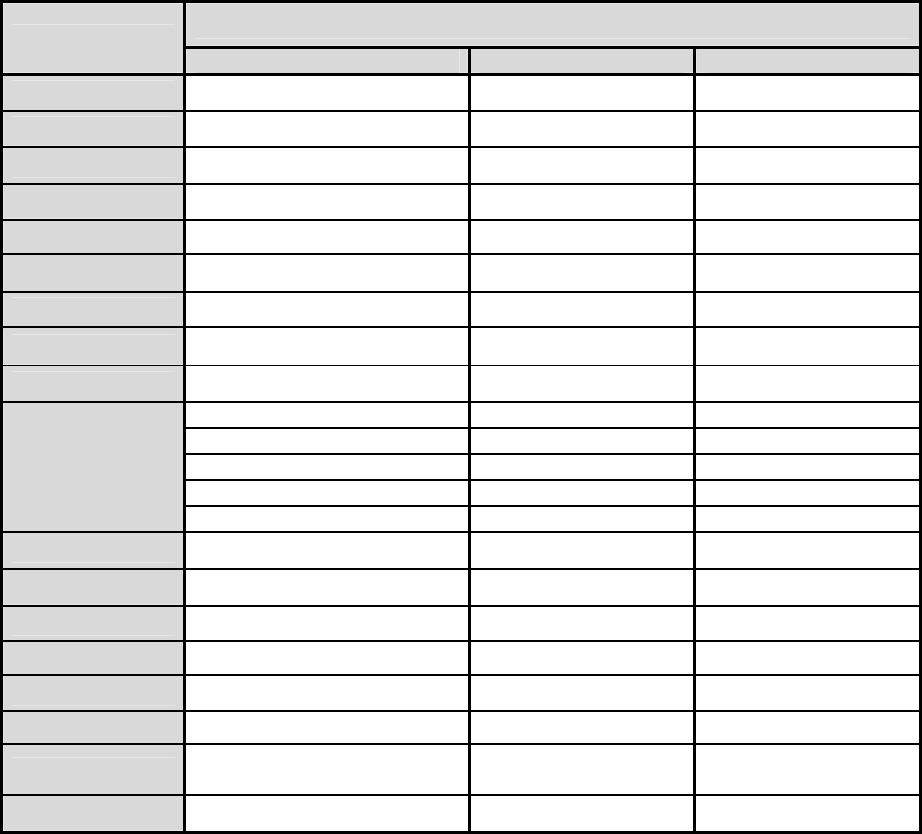
- 7 -
1.2. Product Specification
ZBlinx-Z series
ZE10 ZS10 ZU10
Product type Embedded module Serial Adapter USB Adapter
Interface 2.00mm, pin header 14x2 D-SUB9, Female USB ‘A’, Male
ZigBee Stack ZigBee 2007 Pro ZigBee 2007 Pro ZigBee 2007 Pro
Frequency range 2.410~2.475GHz 2.410~2.475GHz 2.410~2.475GHz
Channel space 5MHz 5MHz 5MHz
Channel number 14ch 14ch 14ch
TX Power +13dBm +13dBm +10dBm
RX Sensitivity -100dBm at 1% BER -100dBm at 1% BER -100dBm at 1% BER
RF connector RPSMA, COAX, CHIP, WHIP RPSMA RPSMA
Dipole 5.37 dBi Dipole 5.37 dBi Dipole 5.37 dBi
Dipole 3.27 dBi Dipole 3.27 dBi Dipole 3.27 dBi
Dipole 1.40dBi Dipole 1.40dBi Dipole 1.40dBi
Whip ANT 2.1 dBi
Antenna type
Chip ANT 0.5dBi
Power +3.3V +5~12V +5V USB power
Battery pack None Lithium polymer +3.7V None
Environmental -30 ~ 80oC, 95% -30 ~ 80oC, 95% -30 ~ 80oC, 95%
Configuration AT command set AT command set AT command set
Dimension 23 x 37 x 11.15mm 68 x 31 x 16mm 68 x 22 x 10mm
Weight 10g 24g 12g
Approvals FCC, CE,TELEC, KCC FCC, CE,TELEC, KCC FCC, CE,TELEC, KCC
Warranty 1-year limited warranty 1-year limited warranty 1-year limited warranty
- 8 -
2. Approval Information
2.1. FCC
2.1.1. FCC Information to User
This equipment has been tested and found to comply with the limits for a Class B digital device,
pursuant to Part 15 of the FCC Rules. These limits are designed to provide reasonable protection
against harmful interference in a residential installation. This equipment generates, uses and can
radiate radio frequency energy and, if not installed and used in accordance with the instructions, may
cause harmful interference to radio communications. However, there is no guarantee that interference
will not occur in a particular installation. If this equipment does cause harmful interference to radio or
television reception, which can be determined by turning the equipment off and on, the user is
encouraged to try to correct the interference by one of the following measures:
• Reorient or relocate the receiving antenna.
• Increase the separation between the equipment and receiver.
• Connect the equipment into an outlet on a circuit different from that to which the receiver is con-
nected.
• Consult the dealer or an experienced radio/TV technician for help.
Caution
Modifications not expressly approved by the party responsible for compliance could void the user’s
authority to operate the equipment.
2.1.2. FCC Compliance Statement
This device complies with part 15 of the FCC Rules. Operation is subject to the following two
conditions:
(1) This device may not cause harmful interference, and
(2) This device must accept any interference received,
Including interference that may cause undesired operation
2.1.3. RF Exposure Statement
The equipment complies with FCC RF radiation exposure limits set forth for an uncontrolled
environment. This device and its antenna must not be co-located or operation in conjunction with any
other antenna or transmitter.
2.1.4. Do not
Any changes or modifications to the equipment not expressly approved by the party responsible for
compliance could void user’s authority to operate the equipment.
- 9 -
2.2. CE
2.2.1. EC-R&TTE Directive
2.3. TELEC
2.4. KCC
- 10 -
3. RF Information
3.1. Radio Frequency Range
2410~2475MHz
3.2. Number of Frequency Channel
14 channels
3.3. Transmission Method
DSSS (Direct Sequence Spread Spectrum)
3.4. Modulation Method
O-QPSK (Offset Quadrate Phase Shift Keying)
3.5. Radio Output Power
+13dBm
3.6. Receiving Sensitivity
-100dBm
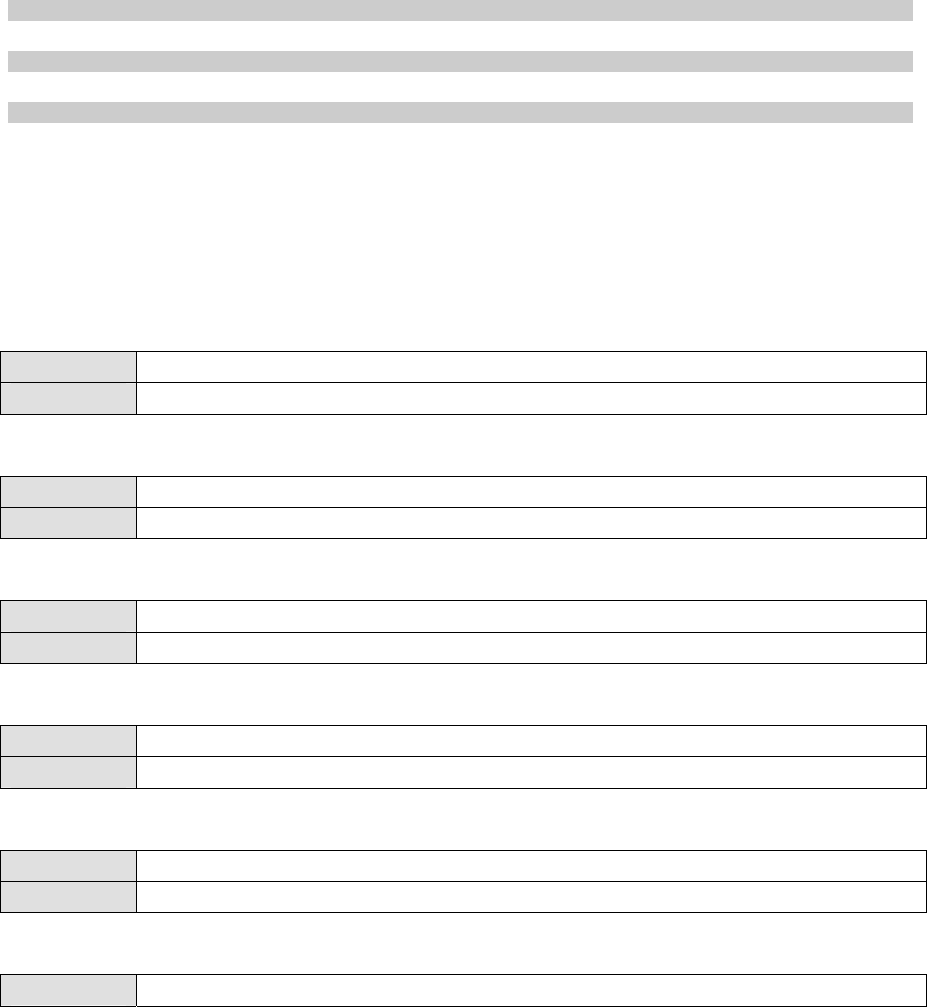
- 11 -
4. AT Command
4.1. Overview
This document contains a description of the AT commands supported in the ZBlinx-Z Series. It also
contains information on how to use the AT commands to create Zigbee applications.
4.2. Command Line Format
Each command line sent to ZBlinx-Z Series is composed of a prefix, body and terminator. Only “AT”
can be used for the prefix. The body is a string of characters. The terminator is <CR> or <NL>. A
command can be one of following:
Read a configuration parameter:
AT<Command>?<CR>
Do something:
AT<Command><CR>
Write a configuration parameter:
AT<Command>=<Parameter 1>,<Parameter 2>,<Parameter 3>,…<CR>
Commands denoted with a “+” character are extended AT commands.
S-registers are not supported. Multiple commands in the same command line are not supported.
4.3. Standard AT Commands
4.3.1. AT
Description Check the state of the connection between host and ZBlinx-Z device.
Response OK<CR>
4.3.2. ATA
Description Answer incoming call.
Response CONNECT<CR>
4.3.3. ATD<node ID or IEEE address>
Description Dial the node ID or IEEE address.
Response CONNECT<CR>, BUSY<CR>, NO CARRIER<CR> or ERROR<CR>
4.3.4. ATE<0 or 1>
Description Echo or No Echo.
Response OK<CR>
4.3.5. ATH
Description Hang up the current call.
Response NO CARRIER<CR>
4.3.6. ATO
Description Return to data mode.
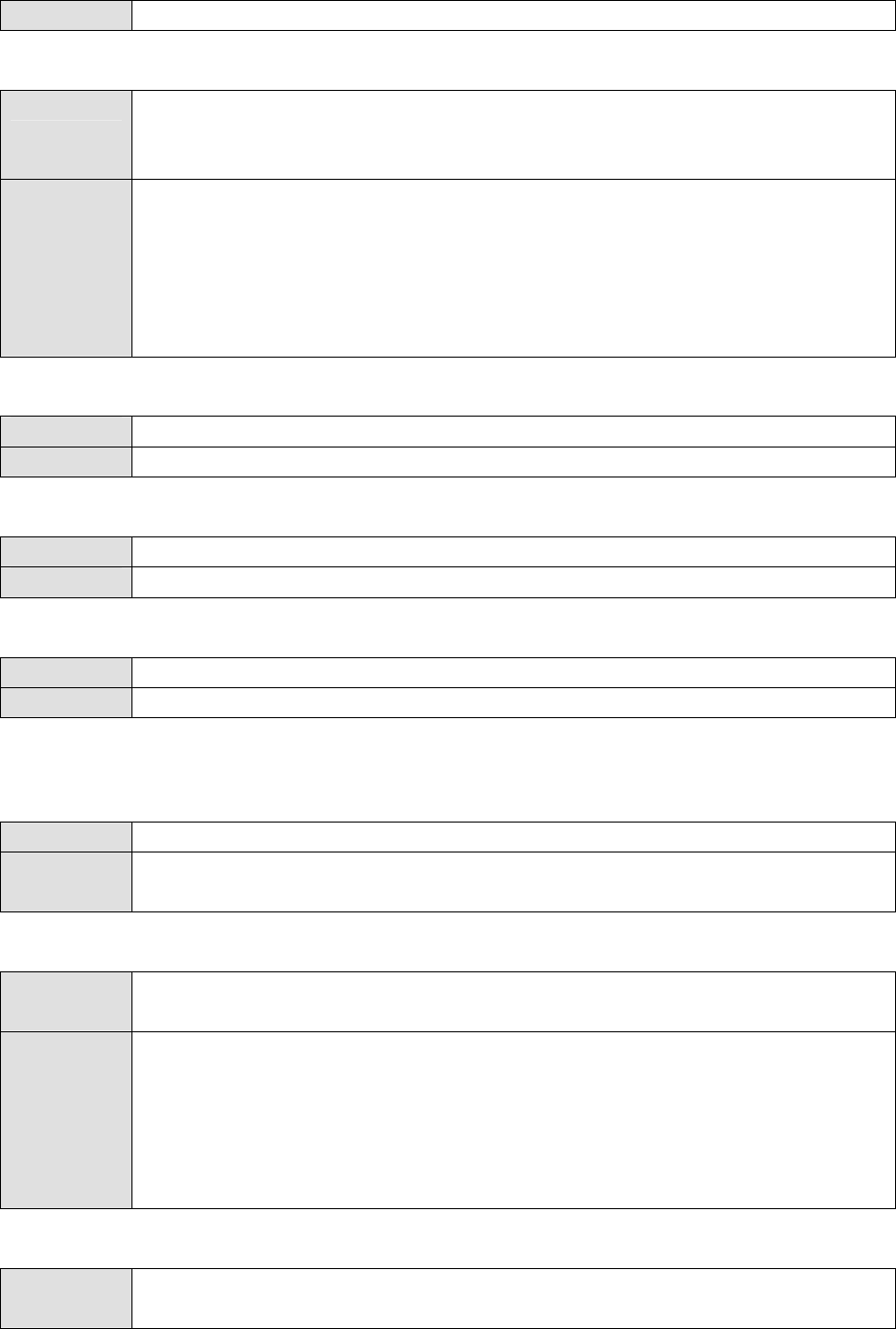
- 12 -
Response
4.3.7. ATS<0 or 40>
Description Get/Set the S-registers.
(S0: number of rings before auto-answer (under 10),
S40: determine thruput (This is the same with the value of data transport mode))
Example ATS0=3<CR>
OK<CR>
ATS40?<CR>
1<CR>
OK<CR>
4.3.8. ATZ
Description Reset the node. (initialize current network status)
Response OK<CR>
4.3.9. AT&F
Description Factory reset. (initialize cookies)
Response OK<CR>
4.3.10. +++
Description Interrupt data mode.
Response OK<CR>
4.4. Extended AT Commands
4.4.1. AT+EUI?
Description Get the 64-bit EUI address. (IEEE address, long address)
Response 000D6F0000488434<CR>
OK<CR>
4.4.2. AT+DESTEUI
Description Get/Set the 64-bit destination EUI address for data transmission. (pairing, point-to-
point and send GPIO values)
Example AT+DESTEUI=000D6F000048842F<CR>
OK<CR>
AT+DESTEUI?<CR>
000D6F000048842F<CR>
OK<CR>
4.4.3. AT+NODEID?
Description Get the 16-bit node ID. (network address, short address) The only coordinator has a
fixed value (0x0000) and other device types are assigned at random.

- 13 -
Response 1E9C<CR>
OK<CR>
4.4.4. AT+CH
Description Get/Set the channel mask to use. Bits set as 1 indicate that this particular channel can
be used. Bits set as 0 indicate that this particular channel should not be used. For
example, a channel mask value of 0x00000001 indicates that only channel 0 should be
used. Valid channels range from 11 to 26 inclusive. This translates to a channel mask
value of 0x07FFF800.
Example AT+CH=7FFF800<CR>
OK<CR>
AT+CH?<CR>
07FFF800<CR>
OK<CR>
4.4.5. AT+PANID
Description Get/Set the 16-bit PAN ID.
Example AT+PANID=ABCD<CR>
OK<CR>
AT+PANID?<CR>
ABCD<CR>
OK<CR>
4.4.6. AT+EPID
Description Get/Set the 64-bit extended PAN ID.
Example AT+EPID=0123456789ABCDEF<CR>
OK<CR>
AT+EPID?<CR>
0123456789ABCDEF<CR>
OK<CR>
4.4.7. AT+POWER
Description Get/Set the TX power. (-43~3)
Example AT+POWER=3<CR>
OK<CR>
AT+POWER?<CR>
3<CR>
OK<CR>
4.4.8. AT+GROUPID
Description Get/Set the 16-bit Group ID.
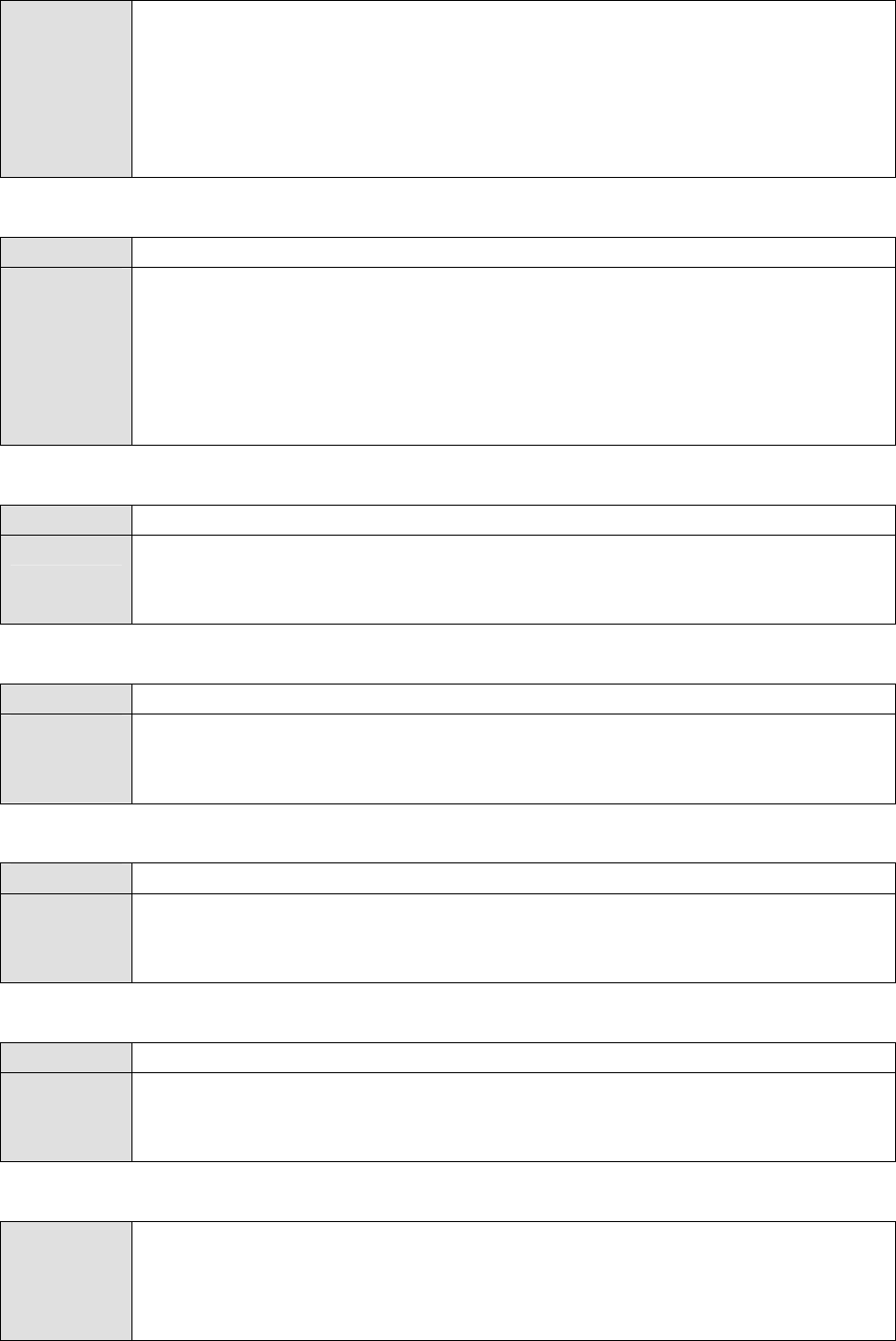
- 14 -
Example AT+GROUPID=ABCD<CR>
OK<CR>
AT+GROUPID?<CR>
ABCD<CR>
OK<CR>
4.4.9. AT+DESTGROUPID
Description Get/Set the 16-bit destination Group ID for data transmission. (group network)
Example AT+DESTGROUPID=ABCD<CR>
OK<CR>
AT+DESTGROUPID?<CR>
ABCD<CR>
OK<CR>
4.4.10. AT+INFO
Description Show the current information of this node.
Response Information of this node
…
OK<CR>
4.4.11. AT+SCAN
Description Perform a scanning for joinable network.
Response List of the joinable networks
…
OK<CR>
4.4.12. AT+ASCAN
Description Perform a scanning for existing network.
Response List of the existing networks
…
OK<CR>
4.4.13. AT+ESCAN
Description Perform a scanning for energy level of each channel.
Response List of the RSSI for each channel
…
OK<CR>
4.4.14. AT+FORM
Description Form a network. If there’s no specified channel mask or PAN ID, it does an energy
scan on the indicated channel mask and randomly chooses one from amongst those
with the least average energy. Then picks a short PAN id that does not appear during
an active scan on the chosen channel. At this time extended PAN ID is alternated for
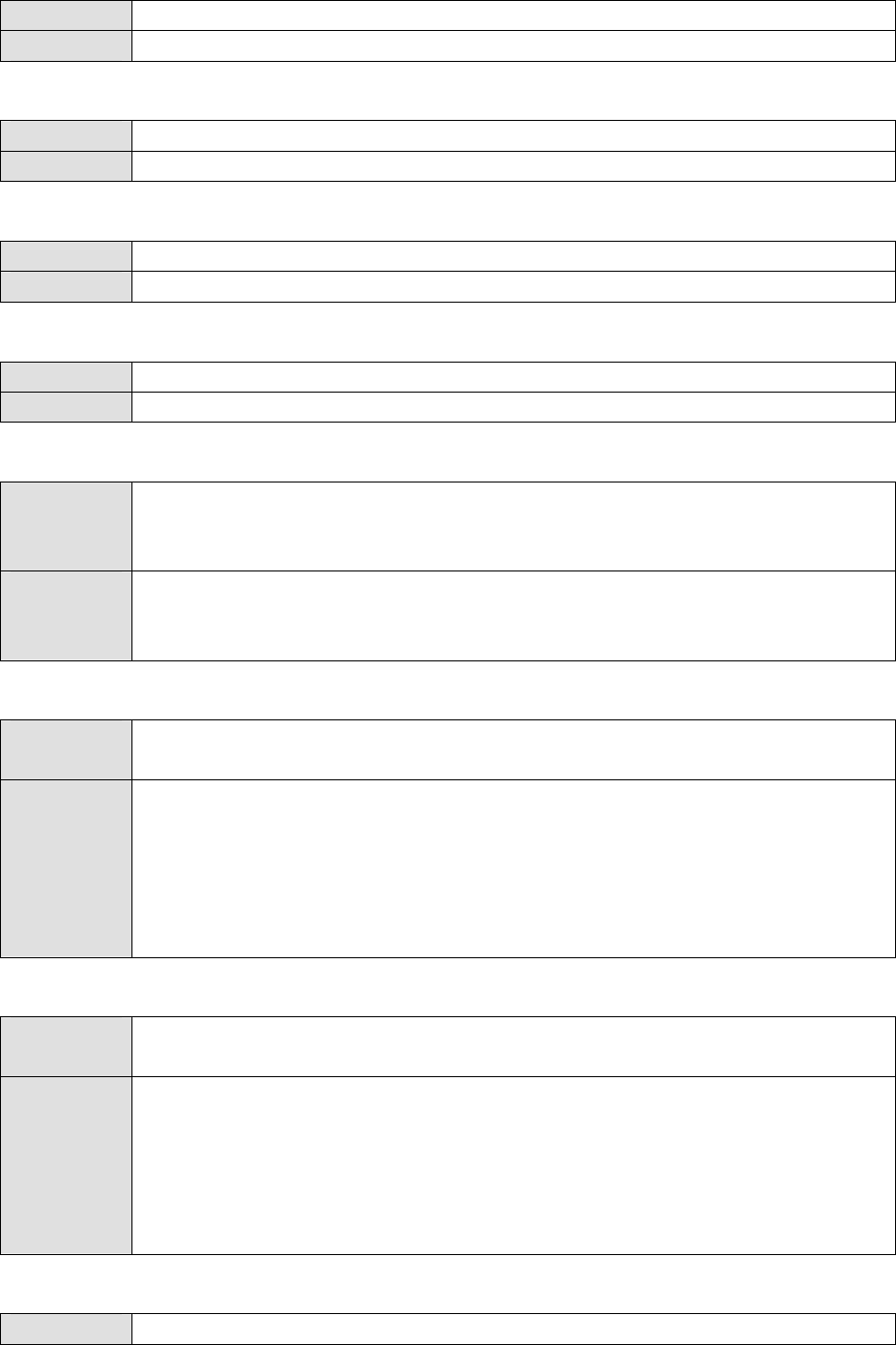
- 15 -
EUI address if it isn’t designated before.
Response OK<CR>
4.4.15. AT+PERMIT
Description Permit other nodes to join the network. (0~254s, 255=continuance)
Response OK<CR>
4.4.16. AT+JOIN
Description Join a network using the specified network parameters.
Response OK<CR>
4.4.17. AT+LEAVE
Description Leave the current network.
Response OK<CR>
4.4.18. AT+SLEEP
Description Sleep mode only for end-device. (0: none-sleep, 1: sleep and wake up periodically and
possible to transmit data, 2: similar to mode 1 but can deep-sleep if there’s no data
transmission quite a while, 3: deep-sleep)
Response Information of this node
…
OK<CR>
4.4.19. AT+NODETYPE
Description Get/Set the node type. (0: none, 1: coordinator, 2: router, 3: end-device) It’s applied
after resetting the node.
Example AT+NODETYPE=1<CR>
OK<CR>
AT+NODETYPE?<CR>
1<CR>
OK<CR>
4.4.20. AT+LISTEN
Description Get/Set the listen mode to receive a message or GPIO value from the network. It is
presented by a form of “+(or ++ when GPIO)EUI address of sender|message”.
Example AT+LISTEN=1<CR>
OK<CR>
AT+LISTEN?<CR>
1<CR>
OK<CR>
4.4.21. AT+OPMODE
Description Get/Set the operation mode. (0: none, 1: pairing, 2: unicast, 3: multicast, 4:
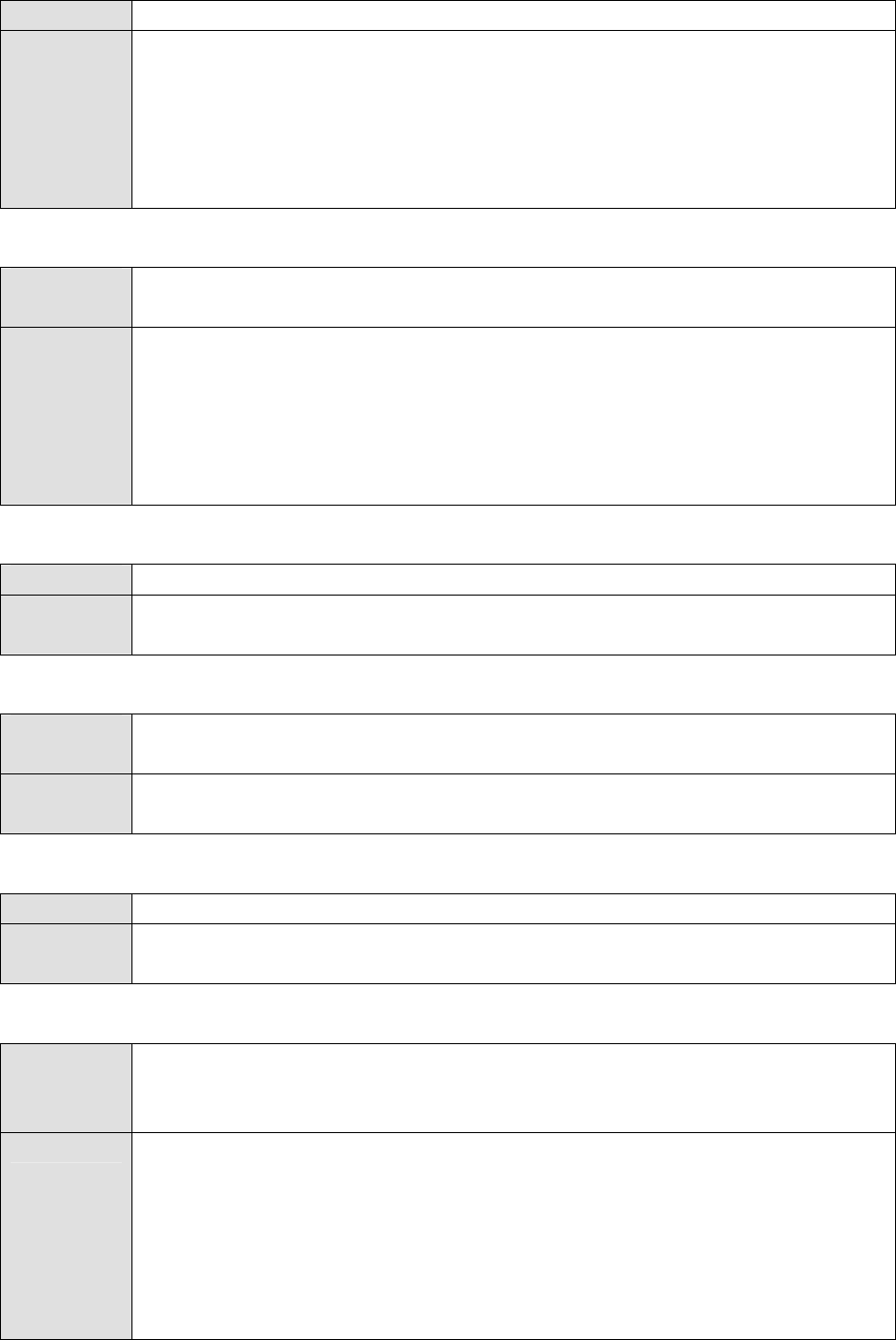
- 16 -
broadcast) It’s applied after resetting the node.
Example AT+OPMODE=1<CR>
OK<CR>
AT+OPMODE=?<CR>
1<CR>
OK<CR>
4.4.22. AT+DATAMODE
Description Get/Set the data transport mode. (0: no data loss, 1~3: optimized for thruput, 4:
maximized thruput)
Example AT+DATAMODE=1<CR>
OK<CR>
AT+DATAMODE?<CR>
1<CR>
OK<CR>
4.4.23. AT+UNICAST
Description Send unicast message to specific node using EUI address or node ID.
Example AT+UNICAST=000D6F000048842F,send_unicast_MSG<CR>
OK<CR>
4.4.24. AT+MULTICAST
Description Send multicast message to specific group. Every node belongs to a group after being
booted up if it is designated a group ID. (default: 0x0000)
Example AT+MULTICAST=ABCD,send_multicast_MSG<CR>
OK<CR>
4.4.25. AT+BROADCAST
Description Send broadcast message to the all nodes joining the network.
Example AT+BROADCAST=send_broadcast_MSG<CR>
OK<CR>
4.4.26. AT+REMOTECONFIG
Description Remote control the configuration of specific node by sending unicast command
message. It is possible to get or set the configuration status of the node joined current
network.
Example AT+REMOTECONFIG<CR>
Possible command list
…
OK<CR>
AT+REMOTECONFIG=000D6F000048842F,AT command<CR>
OK<CR>

- 17 -
4.4.27. AT+TIMEOUT
Description Get/Set the time out for data transmission. (ms)
Example AT+TIMEOUT=100<CR>
OK<CR>
AT+TIMEOUT?<CR>
100<CR>
OK<CR>
4.4.28. AT+PERIOD
Description Get/Set the period to send GPIO values. (250*t ms) Every node sends GPIO values to
the destination EUI address periodically and it can be read listen mode.
Example AT+PERIOD=10<CR>
OK<CR>
AT+PERIOD?<CR>
10<CR>
OK<CR>
4.4.29. AT+GPIO
Description Get/Set the configuration status of GPIO individually or all at once. It’s applied after
resetting the node.
Example AT+GPIO0=1<CR>
OK<CR>
AT+GPIO?<CR>
11000440002200 <CR>
OK<CR>
4.4.30. AT+DIO
Description Get/Set the digital IO value individually or all at once. All GPIO pins can be used as
digital IO and it is only possible to set 0 or 1. If there are some pins used analog input,
they are displayed by “*”.
Example AT+DIO0=1<CR>
OK<CR>
AT+DIO?<CR>
00011**0101111 <CR>
OK<CR>
4.4.31. AT+ADC
Description Get the analog input value individually or all at once. GPIO3~6 are possible to set ADC
and it’s read only.
Response The analog input value of the ADC

- 18 -
OK<CR>
4.4.32. AT+BAUD
Description Get/Set the serial port speed.
Example AT+BAUD=115200<CR>
OK<CR>
AT+BAUD?<CR>
115200<CR>
OK<CR>
4.4.33. AT+DATABIT
Description Get/Set the data bit of serial port.
Example AT+DATABIT=8<CR>
OK<CR>
AT+DATABIT?<CR>
8<CR>
OK<CR>
4.4.34. AT+PARITY
Description Get/Set the parity of serial port.
Example AT+DATABIT=8<CR>
OK<CR>
AT+DATABIT?<CR>
8<CR>
OK<CR>
4.4.35. AT+STOPBIT
Description Get/Set the stop bit of serial port.
Example AT+STOPBIT=1<CR>
OK<CR>
AT+STOPBIT?<CR>
1<CR>
OK<CR>
4.4.36. AT+FLOWCTRL
Description Get/Set flow control status. (0: none, 1: software, 2: hardware flow control)
Example AT+FLOWCTRL=0<CR>
OK<CR>
AT+FLOWCTRL?<CR>
0<CR>
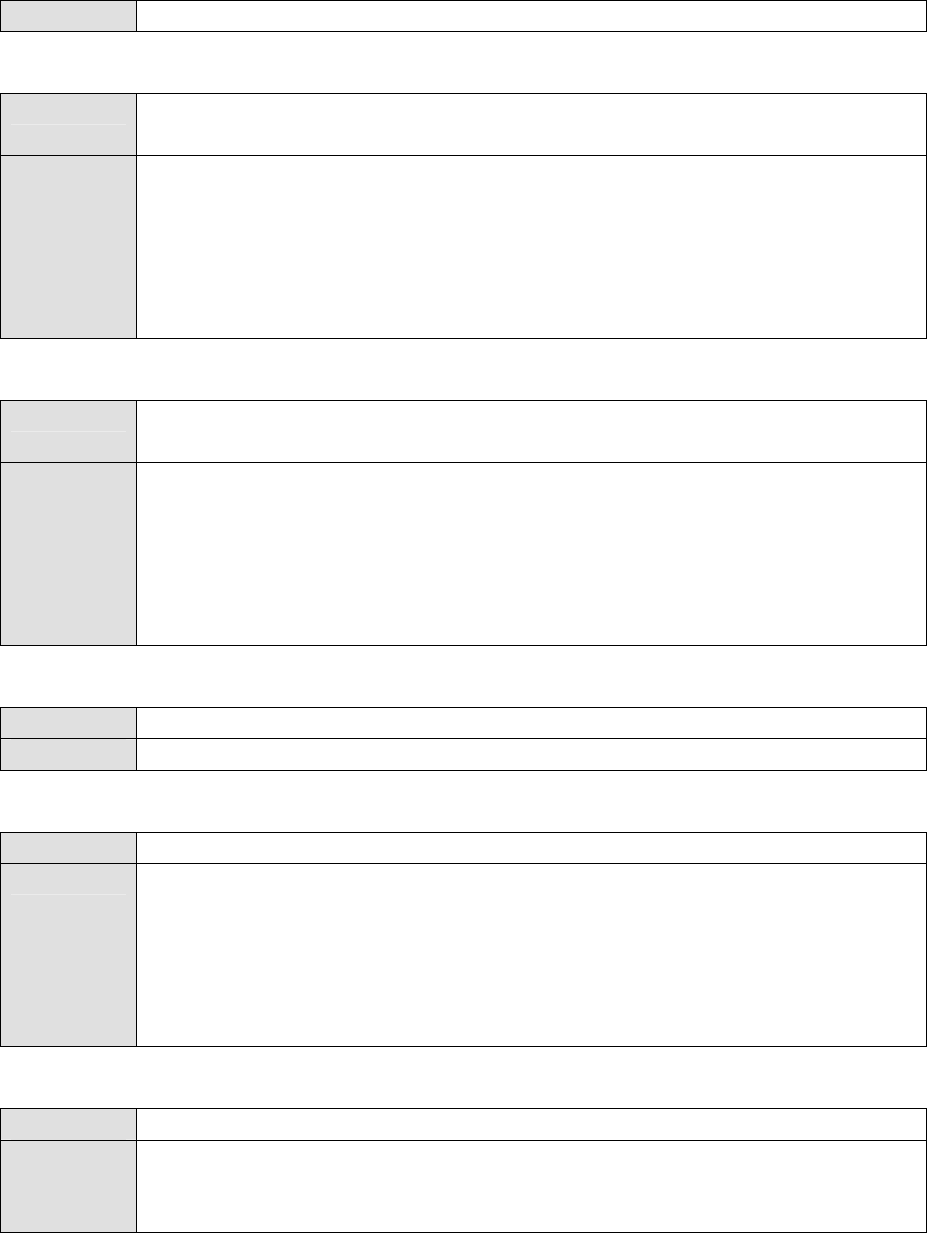
- 19 -
OK<CR>
4.4.37. AT+SECURITY
Description Get/Set the security status. (0: turning security off, 5: on) Every node must be under
the same security level in the network and it’s applied after resetting the node.
Example AT+SECURITY=5<CR>
OK<CR>
AT+SECURITY?<CR>
5<CR>
OK<CR>
4.4.38. AT+NWKKEY
Description Get/Set the 128-bit encryption key. (possible to set only for coordinator, 0: generate
random 128-bit number)
Example AT+NWKKEY=0123456789ABCDEF0123456789ABCDEF<CR>
OK<CR>
AT+NWKKEY?<CR>
0123456789ABCDEF0123456789ABCDEF <CR>
OK<CR>
4.4.39. AT+SWITCHKEY
Description Switch the encryption key for current network only for coordinator.
Response OK<CR>
4.4.40. AT+BOOTLOAD
Description Start bootloader to perform firmware upgrade.
Response EM250 Bootloader v20 b09
1. upload ebl
2. run
3. ebl info
BL >
4.4.41. AT+HELP
Description Show all the available commands
Response Available AT Commands
…
OK<CR>
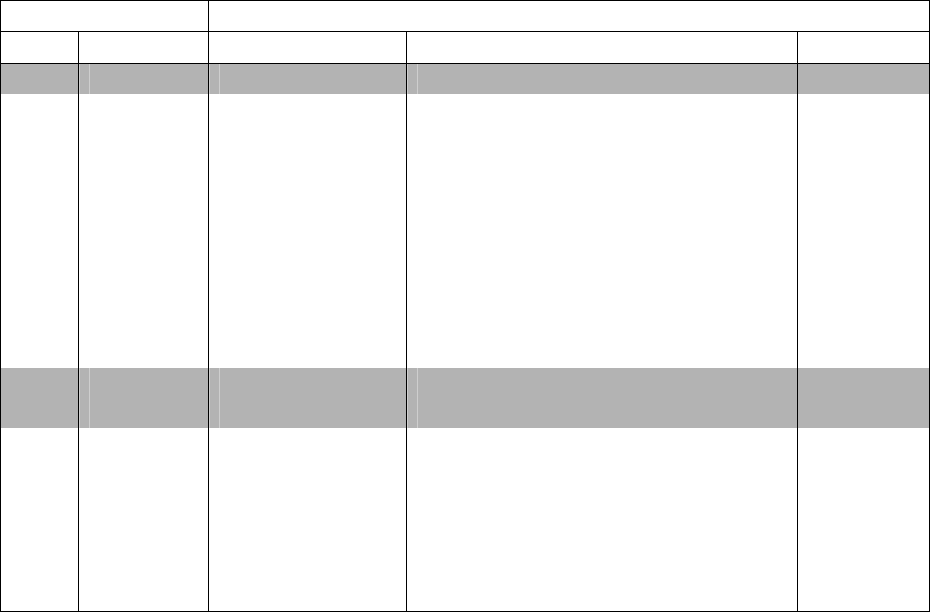
- 20 -
5. GPIO Configuration
5.1. GPIO Configuration
Module Configuration
GPIO Pin number Configured GPIO Specific functionality ADC enable
0 4 - Factory reset (SW0) X
1 6 0 ZC or ZR: Permit joining
ZED: Wake-up (SW1) X
2 5 1 ZB status: ZC/ZR/ZED (LED0) X
3 3 2 ZB status: data transmission (LED1) X
4 11 3 O (ADC0)
5 10 4 O (ADC1)
6 8 5 Set baud rate 1 (DIPSW0) O (ADC2)
7 7 6 Set baud rate 2 (DIPSW1) O (ADC3)
8 ? (unconnected) 7 Set baud rate 3 (DIPSW2) X
9 22 - UART_TXD (LED2) X
10 23 - UART_RXD (LED2) X
11 21 8 UART_CTS X
12 20 9 UART_RTS X
13 24 10 UART_DTR X
14 25 11 UART_DSR X
15 26 12 X
16 19 13 Set baud rate 4 (DIPSW3) X
5.2. GPIO Setting
0 disabled (unmonitored digital input)
1 Digital input, monitored
2 Digital output, default low
3 Digital output, default high
4 Analog input, single ended (A/D pins only)
5 Reserved for pin-specific alternate functionalities